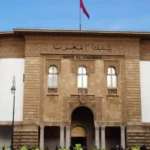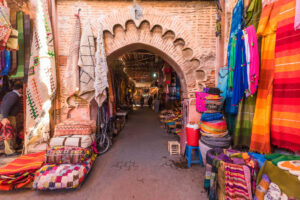Rabat – Significant concerns have been mounting about the appropriation of Morocco’s cultural heritage, including the famous caftan by neighboring rival Algeria.
For decades, several countries in North Africa– particularly Algeria– have been attributing Morocco’s heritage to their history. Another area of concern is either the inaction or lack of action by government actors to address similar cultural appropriation affecting Morocco’s cultural heritage.
In April, Algeria submitted a file to UNESCO, seeking to add so-called Algerian traditional outfits to the list of intangible heritage.
One of the major drawbacks in Algeria’s file is the inclusion of Morocco’s caftan ntaa, which is one of the most famous and iconic traditional dresses in the country’s historic fashion.
Taking its origin from Fez, an area known for the production of such types of traditional clothing, caftan ntaa is known for its velvet embroidered with gold threads.
Moroccan brides commonly adorn themselves with ntaa caftan during the henna ceremony, a small party that takes place on the eve of the bride’s wedding in Morocco.
Surprisingly, Algeria decided to use caftan netaa in its file submitted to UNESCO a few months after Morocco announced that it is preparing to add the caftan to its listed heritage as filed at UNESCO.
Morocco was seeking to see the caftan registered in the UNESCO list in 2025 as the organization only allows the same country to register another intangible every two years.
Morocco registered the Tboruida, a local equestrian art form dubbed ‘fantasia,’ on its UNESCO list in 2021.
This year, Morocco is planning to do the same with the art of Malhoun, a type of Moroccan traditional music. With this happening, Morocco is only allowed to request the registration of Morocco’s caftan in 2025.
Morocco, however, registered the caftan in 2022 on the list of the Organization of the Islamic World for Education Science, and Culture (ICESCO) as an intangible Muslim heritage.
Chess game
The case for Algeria appears to be a chess game, with the country attempting to take advantage of Morocco’s inability to add the caftan to this year’s UNESCO listing.
Morocco World News contacted the Ministry of Culture for a statement on Algeria’s continuous cultural appropriation of Moroccan culture, but the ministry was unreachable.
However, Moroccan news outlet Le360 said it has been reassured by an authorized source from the ministry, saying that the culture department already contacted the permanent delegation representing Morocco at UNESCO on the matter.
The source added that the Morocco representation filed a complaint at UNESCO’s evaluation committee.
Morocco’s complaint only points to the picture depicting the Moroccan caftan ntaa in Algeria’s submitted file.
“These steps are taken via the Ministry of Foreign Affairs and the Permanent Delegation of the Kingdom of Morocco to UNESCO after consultation with Mehdi Bensaid, Minister of Culture, and the Ambassador and delegate Permanent Representative of the Kingdom of Morocco to UNESCO, Samir Addahre,” the authorized source added.
The unnamed source at the Ministry of Culture also denied any possibility of having a joint file between Algeria and Morocco for the caftan.
“There is no possible common file in terms of the caftan because this dress is the subject of an individual file submitted by Morocco,” the source stressed.
UNESCO won’t allow that
Recalling historical research by experts in the field, the source stressed that UNESCO has an intergovernmental committee for the safeguarding of intangible cultural heritage, evaluation mechanisms, and a committee as well as experts who will take the final decision.
“Morocco for its part is playing its part by submitting an application for inscription and by defending its heritage. This was the case in the Adidas case, this is the case with caftan, and it will also be the case tomorrow in the context of other cases. This is Morocco’s firm position,” the ministry’s source added.
The Adidas case references the international brand jersey for the Algerian national team, claiming that the collection was inspired by the “architectural design of the iconic El Mechouar palace in Tlemcen.”
The case generated widespread criticism from Moroccan citizens and Morocco’s government, which caused an immediate response from both ordinary Moroccans and Morocco’s government, with the official patenting of Zellige of Fez at the World Intellectual Property Organization.
“The Zellige industry dates back to the tenth century AD, when it flourished during the Marinid era [in the 13th to 15th century] in the honorable Kingdom before moving to neighboring tribes during the following centuries,” Morocco’s ministry said last year.
Despite Morocco’s response, Algeria sparked another controversy for celebrating Zellige in an exhibition as its own cultural heritage. “[Zellige] is our heritage that we will not give up,” a video showed the governor of Oran Said Sayoud saying during the exhibition.
“It is our right to put it on our jerseys, our blankets, or the fronts of our buildings, and no one has the right to dispute it,” he said, disregarding Morocco’s history.
Source : Morocco World News
















